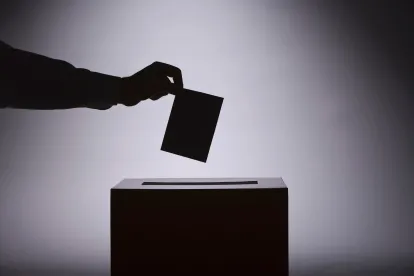Beginning May 31, 2020, the time from petition to union election is slated to double, creating new opportunities for employers. As mentioned in our December 2019 article, the National Labor Relations Board (NLRB), via rulemaking, issued several important changes related to how it will process union certification and decertification elections. These changes included a relaxation of the timelines that guide union elections. The 2014 Obama-Era "Quickie Election" rules greatly accelerated the election process, thereby reducing opportunities for employers to properly apprise employees of the potential effects of organization. Prior to the 2014 “Quickie Election” rules, elections were typically held around 42 calendar days after the filing of a petition. The “Quickie Election” rules shortened this period to between 21 and 31 calendar days.
On March 24, 2020, the National Labor Relations Board (NLRB) announced it will postpone the implementation of the newly modified union election procedures to “facilitate the resolution of legal challenges.” The NLRB originally planned for the new election procedures to take effect on April 16, 2020. But earlier this month, the AFL-CIO sued to block the new procedures and asked the U.S. District Court for the District of Columbia to enjoin them. With this voluntary delay, the NLRB will wait to enact the new procedures until May 31, 2020.
This announcement comes five days after the NLRB suspended all representative elections until at least April 3, 2020, due to the COVID-19 crisis.
In an NLRB press release, Chairman John F. Ring asserted the new election procedures are “common sense changes” that ensure union elections will be “fair and efficient.” Chairman Ring continued, “[t]he new procedures will allow workers to be informed of their rights and will simplify the representation process to the benefit of all parties.”
Election Timing Changes
The increased time to conduct a union election is the most significant effect of these amendments. Under the new rules, all time periods are calculated in business days. Some important changes in timing include:
-
Notice of pre-election hearings must be given 14 business days prior to the hearing, increased from eight calendar days.
-
Employers must post the Election Petition notice within five business days of receipt, increased from two business days.
-
Employers must have eight business days to prepare pre-election Position Statements, increased from seven calendar days.
-
Employers have five business days to furnish the voter list, increased from two business days.
-
Elections cannot be scheduled less than 20 business days after the date of the direction of election (the 2014 rules eliminated the minimum time period between direction and election).
Expansion of Parties’ Rights
The new rules also expand the substantive rights of parties before and after the election. Changes to pre- and post-hearing procedure further increase the length of an election and permit parties to resolve issues prior to the completion of the election process. These changes include:
-
Petitioner must respond, in writing, to all Position Statements of the non-petitioning party at least three business days prior to the pre-election hearing rather than responding orally at the hearing.
-
Issues of unit scope and voter eligibility may be litigated at the pre-election hearing and ruled upon prior to the direction of election rather than reserved for after the election.
-
Regional directors may postpone hearings or extend deadlines for Position Statements upon a showing of good cause (the 2014 rules allowed extensions only upon a showing of special or extraordinary circumstances).
-
Parties may file post-hearing briefs within five business days of pre-election and post-election hearings, eliminating the previously required special permission of the regional director.
-
Ballots are automatically impounded if a request for review is filed within 10 business days of a direction of election.
-
Election results will no longer be certified if there is a pending request for review.
In all, under the new rules it is possible that an election will not be held until around 80 calendar days after the filing of the petition — significantly expanding the period of time available to employees to learn the facts about unions prior to having to vote in a representative election.
Conclusion
The delay in implementing the new election procedures may cause an uptick in the number of union election petitions filed as labor organizations attempt to take advantage of the current, employee-friendly election procedures. Assuming the NLRB does not issue a broader suspension of representative elections due to the COVID-19 crisis, labor organizations now have an additional month to take advantage of the current election procedures.






 />i
/>i
